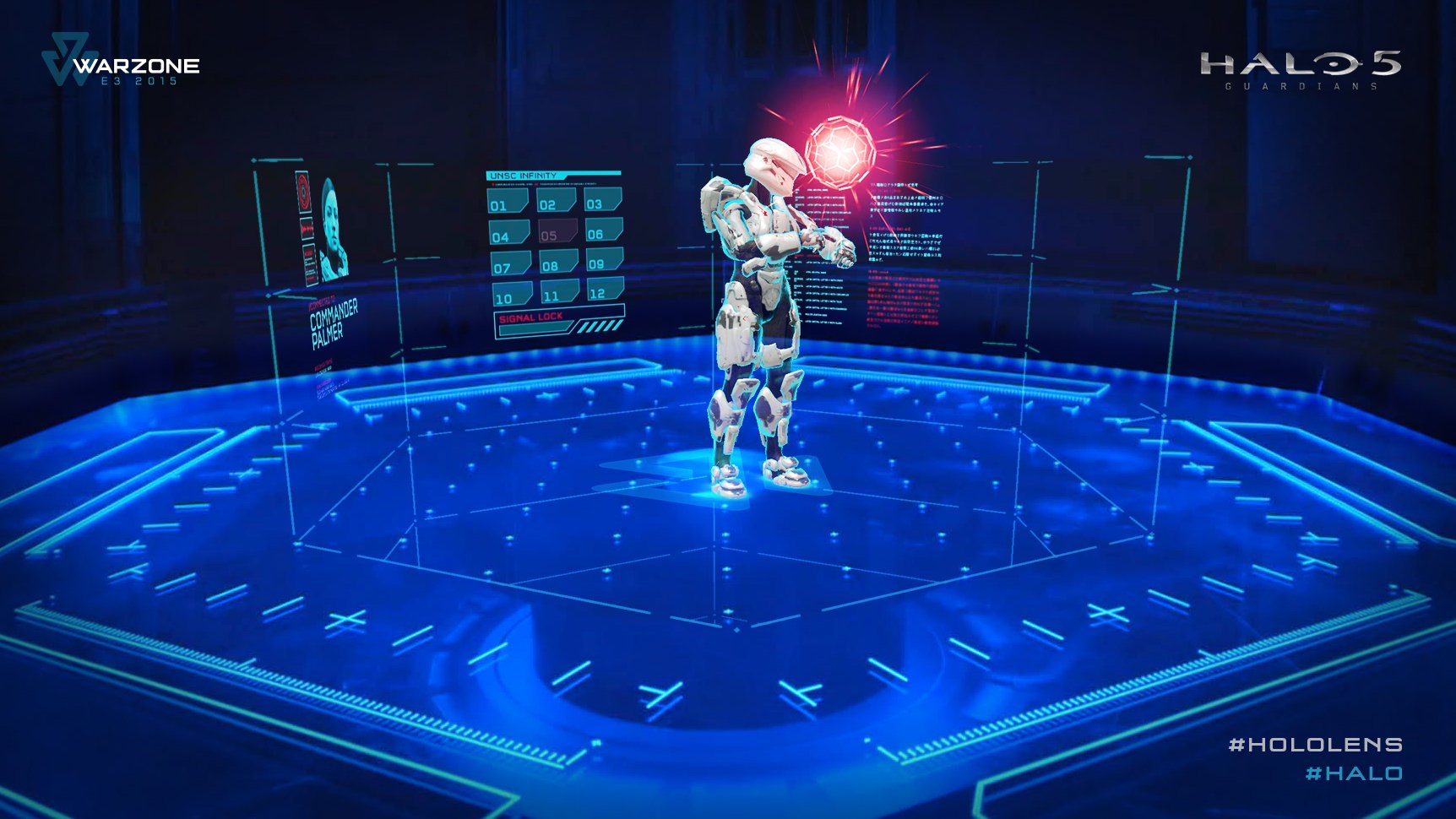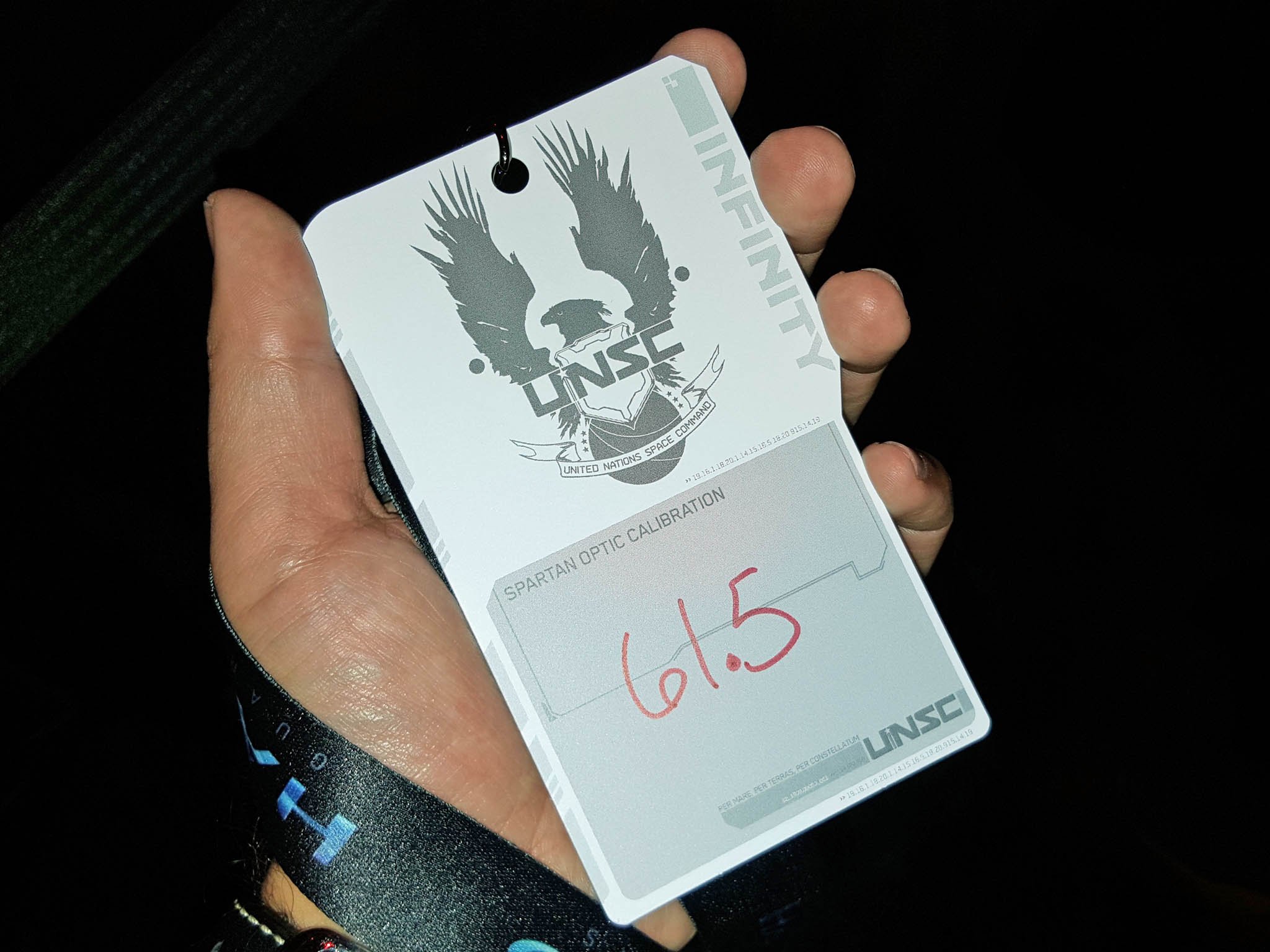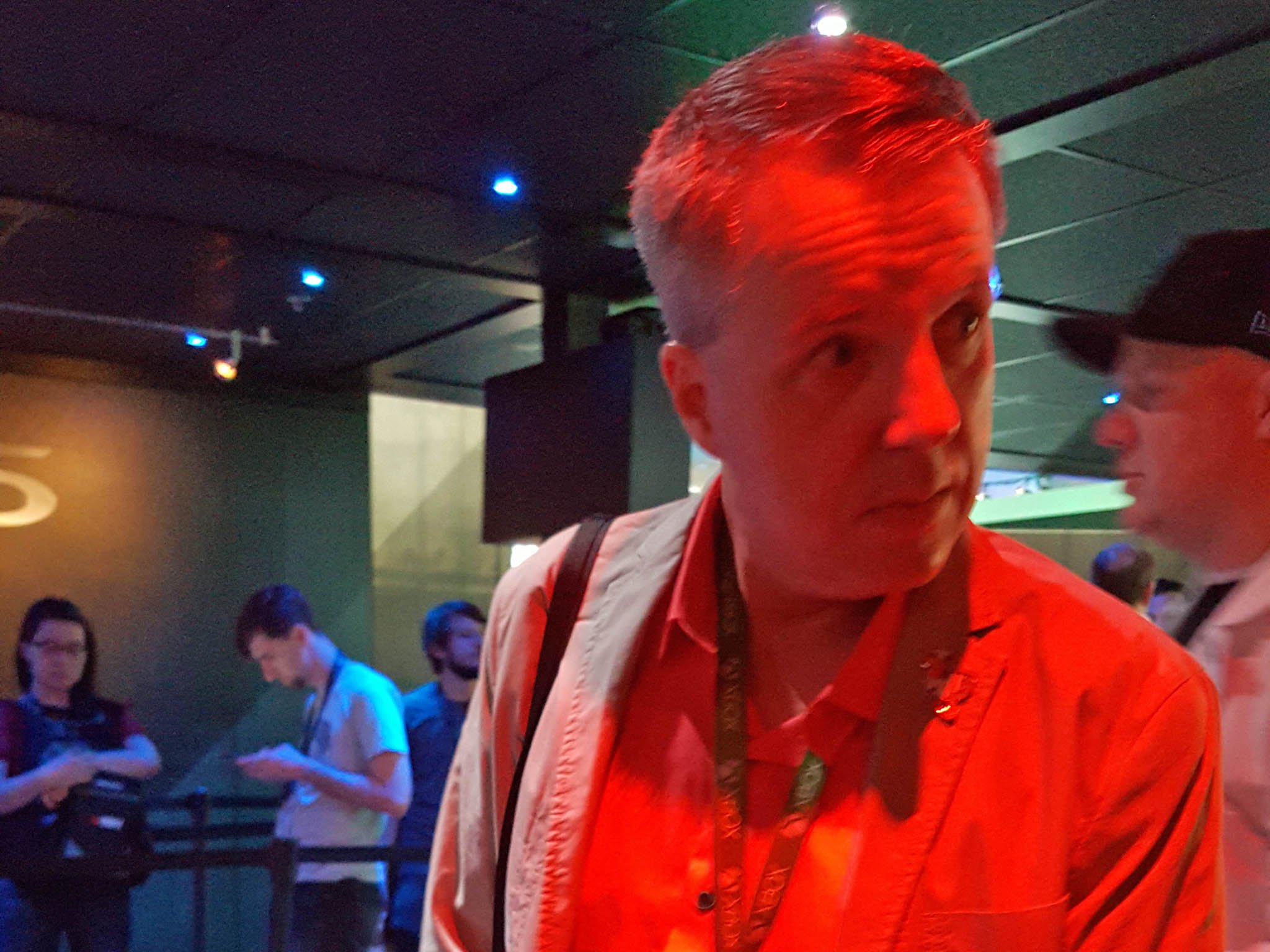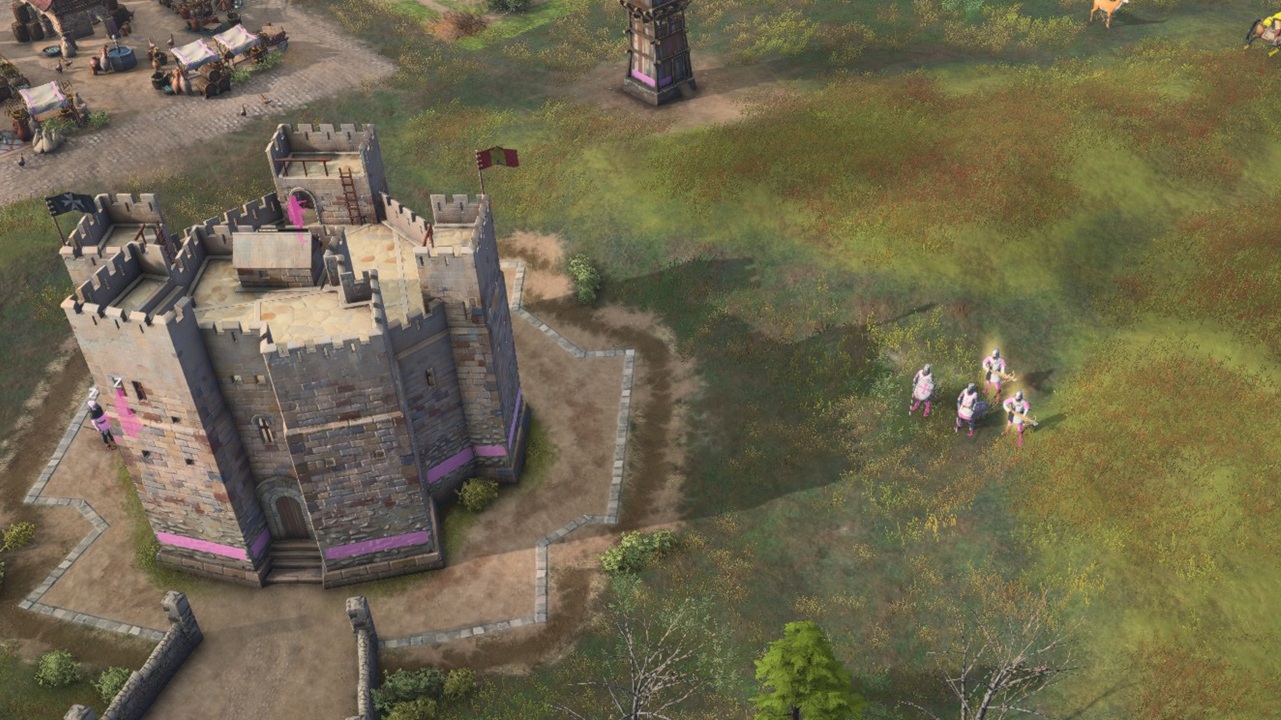Microsoft used the HoloLens for their Halo 5 tour, and it was pretty amazing

This morning started like any other here at E3 2015 – getting up early and going over our schedule. First of the day on my list was the Halo 5 Experience, which Microsoft had offered to some in the media. My initial thought was that this was just a detailed hands-on with the latest shoot'em up where we can ask questions and get the PR tour.
Seeing as the appointment was before the E3 show floor opened, Microsoft had to escort a group of us to the special area. We were given a special badge to wear that was mostly blank. This badge came to be used for a special purpose as I soon found out.

As we are standing in line, a Microsoft employee wearing a lab coat (part of the experience, of course) came by and measured our interpupillary distance (IPD). You likely have had this done too when you get our eyes checked for glasses as it is a measurement of the distance between your pupils.

I get déjà vu. No, not because I recently had my eyes checked for glasses but because Microsoft has done this trick two other times with me for HoloLens. I then see Larry Hyrb aka Major Nelson and I say 'This is HoloLens, isn't it?' and he tells me my mind is about to be blown. Now I'm intrigued.

The Halo 5 demo through HoloLens
My first thought was the Microsoft had another secret: Halo 5 would have a HoloLens component (HaloLens?), but this would turn out to be off-the-mark.
Six of us were escorted through a lab door like the ones you see in science fiction movies (the doors split in the middle and slide out).The only thing missing was the whooshing sound. Microsoft had created a mini military bunker that resembled something you would see in the Halo universe for Spartans. The lighting was blue and red with green, and there was United Nations Space Command (UNSC) logos stamped everywhere.
Some other Microsoft employees, also wearing lab coats, then sat us down and called us up one by one. Our IPD was entered into a computer that calibrated the HoloLens for our eyes. We were then instructed to get up, and the HoloLens came to life.
Get the Windows Central Newsletter
All the latest news, reviews, and guides for Windows and Xbox diehards.
Microsoft did a clever thing with this demo. The HoloLens put a beacon in the distance with a meter on it. As you walked towards it, the numbers (distance in meters) dropped. Yes, HoloLens was acting as a guide, telling you where to go. As we came to our areas, we had to look at a certain security system that the HoloLens activated through our gaze.
As we entered the main room, there was a round map table like you would see in Star Wars. Looking at the table through the HoloLens and you would see a hologram from Halo.
The whole thing was a tutorial on the Warzone game of Halo 5 that we were about to play. A female Spartan walked out from a bunker and explained to us the map, goals, enemies, how to level up and grab weapons.
The HoloLens experience lasted between 5 to 10 minutes, and no photos were allowed during the event.
You can see a quick video demonstration of this in the video embedded here.
Overall, it was an exciting and unexpected use of HoloLens. The people in attendance, most of which never used HoloLens, were certainly blown away by it. Seeing as this was my third opportunity with HoloLens, I was still impressed but obviously it was not as 'mind blowing' as that first time back in January.
Hey, as of today, I have worn a HoloLens on my head for over two hours, so it's hard to keep that child-like awe fresh! Okay, it was pretty awesome.

Did anything change?
Many are probably wondering if the hardware has changed at all or if the field-of-view (FOV) had improved since the last time I used HoloLens. After all, many of us complained back at Build that the limited FOV was hindering the experience. You do not see holograms all around you, just holograms in your direct line of site, which is quite narrow.
The hardware was different in slight ways. For one, the dial at the back to tighten the band was now much smaller, giving the device a much cleaner look and the device overall felt sturdier.
Regarding the FOV I cannot definitively say it was drastically better. Nor was it worse. I was, however, able to see more once I pulled the lens part away from my face. It is still not as immersive as what Microsoft reveals in the video, but the overall quality of the holograms, and the sound (aural experience) was still excellent.
Most of the people in attendance did seem very impressed with it, and I did not hear any complaints, which was a change from the Build experience in San Francisco.
HoloLens is certainly very impressive technology, and there are some exciting applications of the technology. Even though HoloLens is still in its infancy, Microsoft is well advanced already in the hardware and software aspects of this new genre. This commitment means that things can only get better, but it may take some time to get there.
For now, I think Microsoft is doing things right with these slow rollouts to the public, getting feedback and further refining the experience. I'm still very excited about HoloLens, but I am more interested in seeing what Microsoft does next with it.
Oh, and Halo 5 Warzone was pretty great too.

Daniel Rubino is the Editor-in-chief of Windows Central. He is also the head reviewer, podcast co-host, and analyst. He has been covering Microsoft since 2007 when this site was called WMExperts (and later Windows Phone Central). His interests include Windows, laptops, next-gen computing, and wearable tech. He has reviewed laptops for over 10 years and is particularly fond of 2-in-1 convertibles, Arm64 processors, new form factors, and thin-and-light PCs. Before all this tech stuff, he worked on a Ph.D. in linguistics, performed polysomnographs in NYC, and was a motion-picture operator for 17 years.
